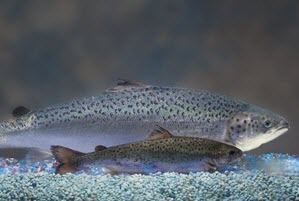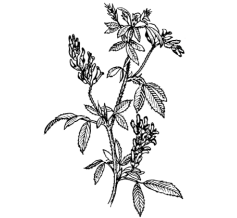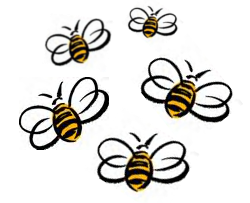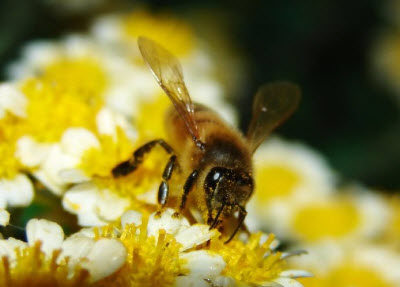The Food and Drug Administration has preliminarily determined that a genetically modified salmon developed by AquaBounty Technologies is safe for human consumption but many questions about the safety of GE salmon persist.
|
|
|||
In the News - News and OpinionThe 3rd Circuit Court of Appeals recently permitted New Jersey blueberry farmers to continue with their suit for negligent misrepresentation, fraud and products liablity against a pesticide manufacturer, Novartis Crop Protection, Inc. In depth analysis of Judge White’s decision which rescinded USDA’s and APHIS’ decision to deregulate Roundup Ready sugar beets without conducting an Environmental Impact Statement. The first ever Non-GMO Month is coming this October with 10 10 10, or Non-GMO Day, serving as the highlight day of the month. Check out a list of participating vendors and start transitioning to non-gmo today. Yes, some of the highest concentrations of BPA that we are regularly exposed to are not in plastic bottles or cans, but in at least 40% of paper receipts we get from supermarkets, ATMs, and gas stations. In a study by the Environmental Working Group, some tested receipts showed 1,000 times the amount of BPA as you would find on a typical food can! Apparently, 93% of Americans have detectable levels of BPA, an endocrine disruptor that may cause cancers and reproductive problems. Last week, superweeds and GMOs were on the minds of many U.S. lawmakers. Reports continued on growing pesticide resistance. Bee colony collapse problem grows. EPA considers giving environmental justice a chance. EU approved more GM maize imports, while a GMO-Free Europe conference nears. And more. When Barak Obama was elected, many in the sustainability movement believed that they finally had an ally in the White House. However, the President’s agricultural appointments tell a different story. A coalition of agriculture groups and 75 Members of Congress wrote to Tom Vilsack, urging the USDA to allow limited planting of Roundup Ready alfalfa while the agency completes an Environmental Impact Statement. The latest stories: Organic pest management proven to be better than pesticides. Chemical farming interests boost anti-pesticide message. GE tree trials continue. Why do we need GM potatoes? GM contamination lawsuits. Personal story about becoming a locavore. And more. Ever since the Supreme Court handed down its mixed 7-1 decision, ruling that the lower court overstepped its boundary by issuing an injunction on the planting of genetically modified alfalfa, some lawmakers were spurred to action. The next generation of biotech crops are designed to express alleged nutritional benefits. However, advertising such foods as “healthy” would only confuse the consuming public. The United States Supreme Court handed down its first ever decision concerning genetically modified crops and it is a mixed result for farmers, consumers and environmental groups. From the company that brought you plastics and rubber (DuPont) comes a genetically modified soybean that is altered to exhibit alleged health benefits. A 13-state survey of honey bee pests and diseases that will help USDA scientists to determine the factors that may be contributing to the decline of honey bee colonies nationwide. A Ghanaian village will get the chance to see its national heroes play in the 2010 FIFA World Cup South Africa, despite being outside the national grid, through a scheme promoting the use of solar energy. The 6,900 people living in and around Oboadaka, an hour from capital city Accra, will be able to watch matches live in an attempt to persuade them of the benefits of solar power. With the 2010 Soccer World Cup just days away and with the world’s eye focused on South Africa, we decided to take an exciting departure for our publication to examine the environmental impact of the tournament. We look closely at World Cup’s carbon footprint and the innovative programs undertaken to reduce it. Professor Brian Wynne was vice chairman of a steering group set up by the Food Standards Agency to gauge the public mood on genetically modified (GM) food. Prof Wynne said that he resigned when it became clear that the consultation was biased in favour of GM. Earlier in the week another member of the group, Dr Helen Wallace, Director of the non-governmental organisation Genewatch, resigned in protest at the Food Standard Agency’s allegedly close links with the agri-chemical industry. Recent research from USDA points to a correlation between a fungus and a family of viruses that may be working together to cause the Colony Collapse Disorder in honeybees. Many still believe, however, that other causes such as pesticide use in agriculture and GMOs that produce pesticides, also play a role in the collapse. Last week, current and former chicken growers, mostly from the South, gave attorney general Eric Holder and USDA secretary Tom Vilsack accounts of a lack of competition, poverty-level earnings and bait-and-switch tactics among the big chicken producers. “This system takes hard working farmers and makes them indentured servants on their own land,” Kay Doby, a former chicken farmer from North Carolina, told a crowded room at Alabama A&M University. In a somewhat positive news for consumers, Hunt’s ketchup product line will no longer contain contain high fructose corn syrup, ConAgra Foods announced on Monday. The high fructose corn syrup will be replaced with sugar from sugar cane. The planting of GMOs in Brazil and Argentina — both among the world’s top producers of GM crops — indicates that growth in GM crop production has guaranteed neither wide-scale social acceptance of the technology nor benefits for small-scale farmers. EPA has announced plans to place additional limitations on the use of three N-methyl carbamate pesticides – carbaryl, carbofuran and methomyl – to protect endangered and threatened salmon and steelhead in California, Idaho, Oregon and Washington, in compliance with the Endangered Species Act. The decision comes after manufacturers of the chemicals diazinon, malathion and chlorpyrifos refused to adopt the limits voluntarily. We review and provide legal analysis of the oral argument in the Monsanto v Geertson matter heard recently by the Supreme Court. |
|||
|
 |
|||















